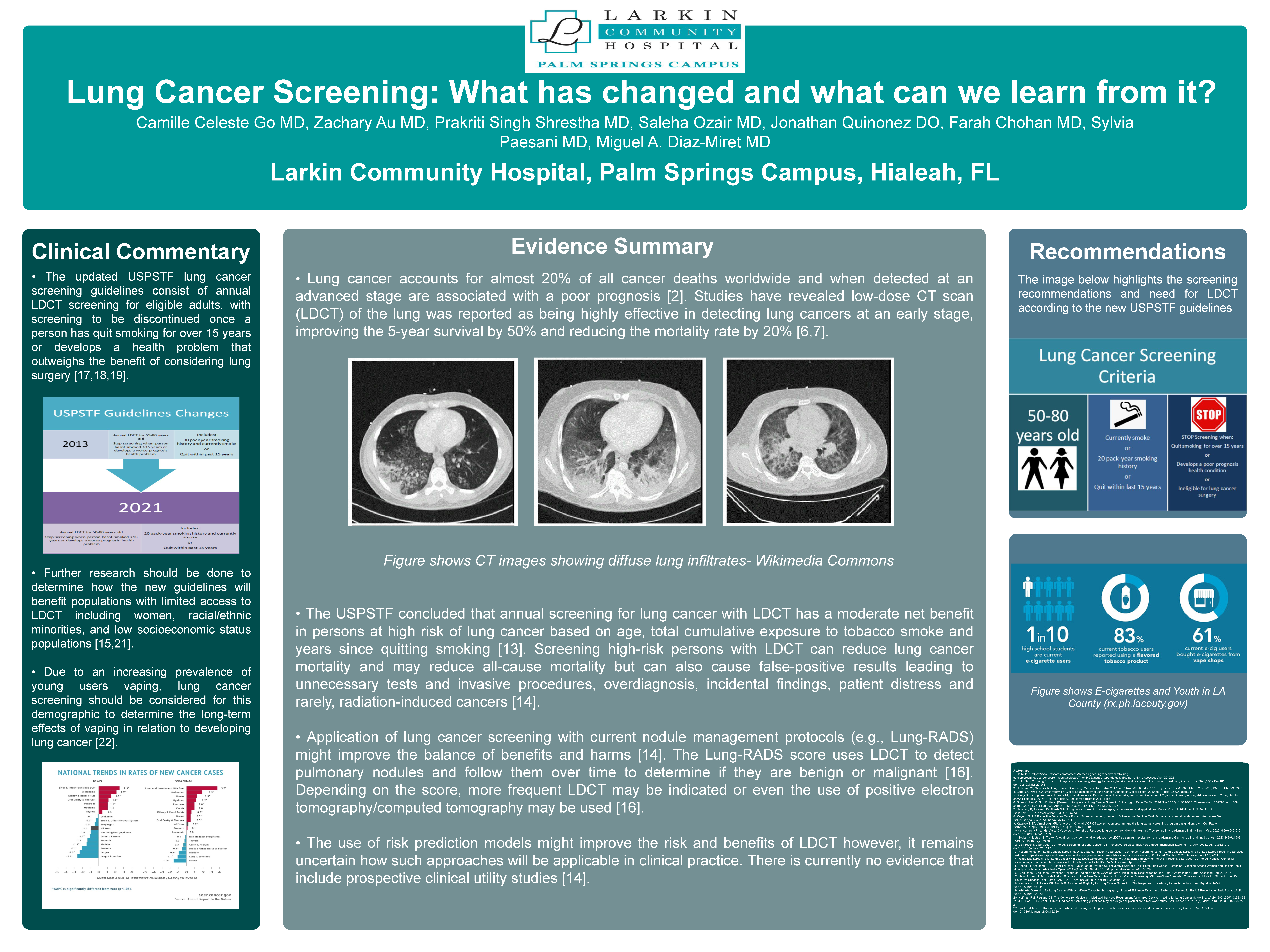PCR035: Lung Cancer Screening: What has changed and what can we learn from it? (Pearls)
Zachary Au, MD, MPH, CPH; Camille Go
Abstract
Lung cancer, predominantly caused by smoking, has consistently been one of the leading causes of cancer-related deaths in the United States. The United States Preventive Services Task Force (USPSTF) recommended screening with low-dose CT scan (LDCT) to reduce overall mortality. Throughout the years, significant changes have been made by the USPSTF after the National Lung Screening Trial (NLST) found a significant 20% relative reduction in lung cancer mortality. The 2021 USPSTF recommendation now includes expanded access to this screening, including lowering the screening age from 55 to 50, as well as recommending to expand access to females and underserved populations. Although these are noteworthy changes, there are still concerns that these new criteria do not take into account race, sex and younger patients who smoke >20-pack years. Given the prevalence of vaping and “e-cigarette”, we recommend that providers be vigilant to identify eligible populations who may benefit from this screening, with the discussion of its risks and benefits. Counseling, encouraging smoking cessation and early screening protocols should still be key factors preventing lung cancer. It is also important to lobby for broader changes to current recommendations to adapt to the current smoking culture of society.

Jack Westfall
jwestfall@aafp.org 11/20/2021thanks for this poster. i keep learning new stuff from NAPCRG researchers. thanks